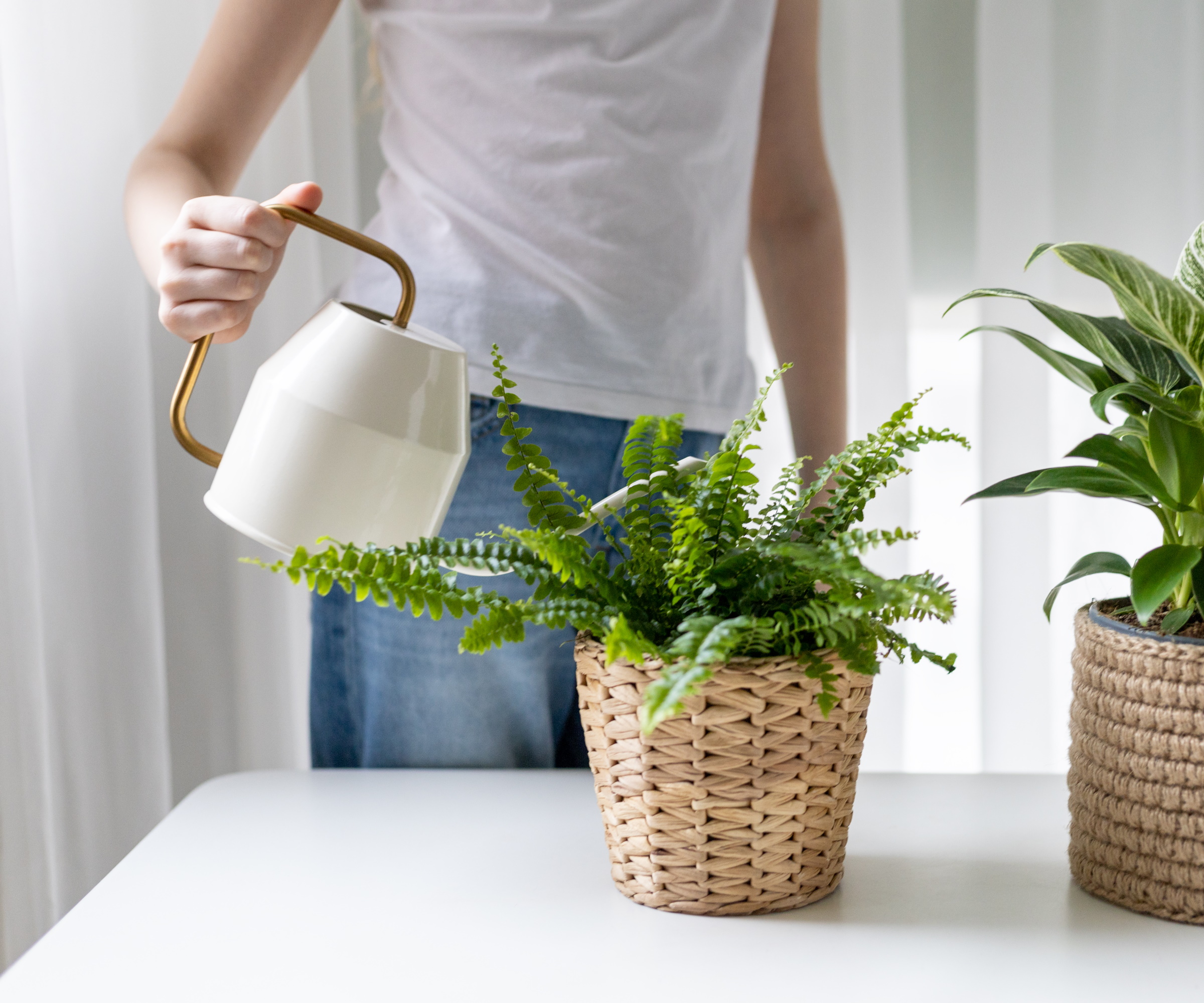How to care for a lemon button fern – 3 tips houseplant experts guarantee will bring you more charming fronds
If you love Boston ferns but don't have the room, opt for this compact variety instead


There are few things I love more than discovering houseplants with fun and charming names, and lemon button fern certainly fits the bill. It's a beautiful compact fern with round leaflets on luscious fronds of a lemon-green color. If it reminds you of a Boston fern, that's because lemon button fern is a dwarf variety of it.
Care for a lemon button fern is much the same as other indoor fern care. Although, there are some specific requirements you need to meet in order to stop your lemon button fern turning yellow, shrivelling, or crisping up.
Not sure where to start? Look no further. Here, houseplant experts share their top tips on how to care for a lemon button successfully.
3 tips for lemon button fern care
'This is a smaller fern perfect for the person who doesn’t have the room for a huge Boston fern or a large fern of any kind,' says Lisa Eldred Steinkopf, houseplant expert at The Houseplant Guru. 'It only grows about 12-14 inches tall and wide. It has cute fronds that look like buttons, thus the cute name,' she adds.
Failing to do the following things can lead to your fern turning brown or your fern drooping:
1. Give your lemon button fern plenty of light

Whenever it comes to finding the right spot for your houseplant, it's best to turn to its native habitat to best understand how much light it needs and how much sunlight it is sensitive to.
'They are understory plants in their native habitat, which means they like bright, indirect light, such as from an eastern window or four to five feet from a southern or western window,' says Julie Bawden-Davis, indoor plant expert at Healthy Houseplants.
Design expertise in your inbox – from inspiring decorating ideas and beautiful celebrity homes to practical gardening advice and shopping round-ups.
In direct sun, the delicate fronds may suffer from leaf scorch, but they can benefit from brighter light, too.
'I have some under grow lights for houseplants, and they are going crazy,' says Lisa. 'The light from a south window would be too much, and a north window may work for some ferns, but I think most would do better with more light,' she adds.
A grow light can be particularly helpful for caring for houseplants in winter, when natural light is more limited. This full spectrum grow light from Amazon has a timer function, so you can set it to come on for a few hours.

Lisa is a houseplant expert who runs her blog The Houseplant Guru with over a decade of professional experience at Steinkopf Nursery and Garden Center in Michigan. As a child, Lisa helped her grandma tend to African violets and other houseplants. Since then, Lisa has forged a career providing houseplant advice, holding lectures and writing for publications across the US.
2. Don't let your lemon button fern dry out

Just like caring for a maidenhair fern and Boston fern care, it's important to get the moisture levels right for your lemon button fern. Too much and too little water could impact the appearance of your plant's fronds and hinder its growth.
'They should never dry out, if possible, yet they don’t want to stand in water, either,' says Lisa. 'I try not to water on a schedule but check on a schedule and water when needed. They should be checked every few days,' she continues.
'Water lemon button fern when the top half inch or so has dried out,' Julie adds.
You can check if your lemon button fern needs watering using this soil moisture meter from Amazon. These watering globes from Amazon can also help provide consistent moisture for your fern roots.
If you have overwatered your fern and it's experiencing houseplant root rot, you can prune houseplant roots with these pruning snips from Amazon. You should also repot it to give it fresh potting mix, and use an improved watering regime going forward.

Julie Bawden-Davis is a garden author and University of California Certified Master Gardener, who has written several gardening books, including Indoor Gardening The Organic Way. In addition to running HealthyHouseplants.com, she shares indoor gardening advice on her YouTube channel @HealthyHouseplants.
3. Remove old foliage

Even when you're providing an optimal growing environment for your lemon button fern, it's not uncommon to spot some fronds turning yellow. This happens to the older foliage as part of the ageing process and it simply needs removing.
'The older fronds will die, yellowing is a sign it's time to cut them off,' says Lisa.
This tends to be fronds lower down, and you can use essential pruning tools to remove them. These pruning shears from Amazon will work well.
Make sure to always follow the one third pruning rule when doing this. Removing more than a third of the plant at a time can stunt its growth and hinder its health.
If your fern is turning yellow or brown elsewhere on the plant, such as on newer growth, it rather indicates a growing environment issue.
'It could be too much water, in which case you should check the saucer or planter it is in to make sure the drainage hole is clear and allowing water to pass through,' says Lisa.
FAQs
Does lemon button fern require high humidity?
Like other ferns which are native to tropical climes, lemon button fern benefits from higher humidity levels, around 50%.
'Misting is not the best way to add humidity, though. That only lasts a minute or two. It would be better to add a humidifier to your room or use pebble trays to add humidity around the plant,' says Lisa Eldred Steinkopf, houseplant expert at The Houseplant Guru.
As Lisa notes, there are lots of way to increase humidity for indoor plants. This humidifier from Amazon can help provide consistent humidity levels, or consider placing your lemon button fern on a pebble tray (from Amazon).
By following these tips, your lemon button fern will thrive for years to come. There are also some general indoor plant mistakes you should avoid to be successful, including paying attention to places to never grow a Boston fern, which also apply to a lemon button fern.

Tenielle is a Gardens Content Editor at Homes & Gardens. She holds a qualification in MA Magazine Journalism and has over six years of journalistic experience. Before coming to Homes & Gardens, Tenielle was in the editorial department at the Royal Horticultural Society and worked on The Garden magazine. As our in-house houseplant expert, Tenielle writes on a range of solutions to houseplant problems, as well as other 'how to' guides, inspiring garden projects, and the latest gardening news. When she isn't writing, Tenielle can be found propagating her ever-growing collection of indoor plants, helping others overcome common houseplant pests and diseases, volunteering at a local gardening club, and attending gardening workshops, like a composting masterclass.